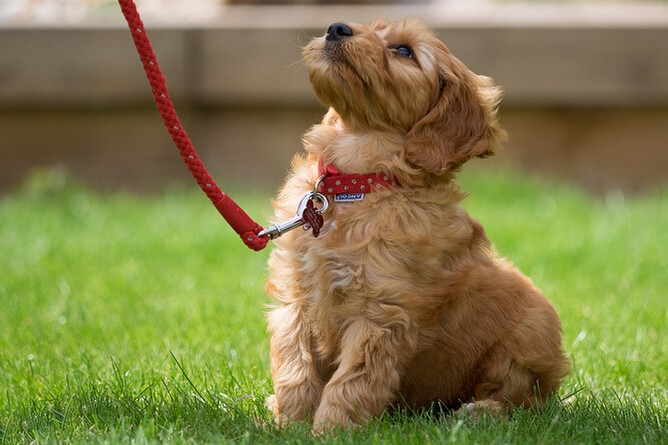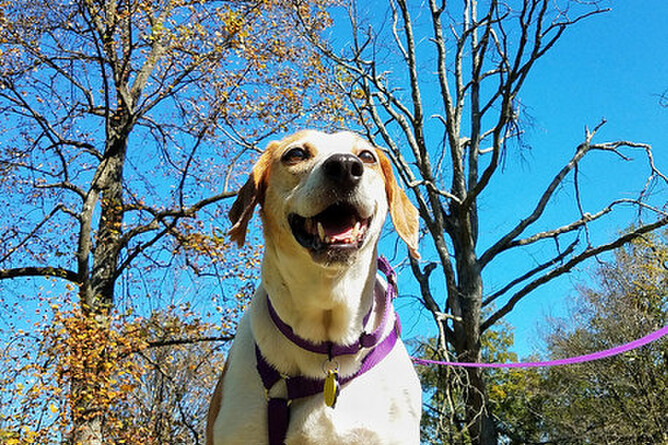Tips and tricks for getting a handle on lead training
Some pups just have a mind of their own!
Countless dog-owners struggle with walking their dogs and lead training. Whether it’s darting off to sniff something on the ground, or chasing after another dog, it’s safe to say we’ve all been there.
We’ve put together some helpful tricks for lead training, so that you can stop worrying about how your dog will behave in public, and both of you can begin to fully enjoy walks.
1. Remember who’s boss
We like to think of our dog’s as our best friends, but it’s important to remember that you’re the one in charge!! Don’t let your dog (however insistent) decide when to walk, or when they get off-lead time.
Before you set off for a walk, calm them down first. Put their lead on, grab your coat and wait a couple of minutes before leaving to ensure they are calm and patient from the get-go.
If they’re running around, excited and barking, stand completely still and do and say nothing until they’ve relaxed.
If you always wait to set off till they’re calm and relaxed, they will begin to associate this behaviour with walks.
2. Choose the right lead
This may seem obvious, but choosing the right lead can be the difference between being dragged along for the entirety of the walk or remaining in control.
Standard style leads are the most common, but when lead training your dog you may want to consider a different type.
If you are feeling overpowered by the pulling, there are devices that can help. A chest-led harness is preferable to a head-brace, as it takes the pressure off the neck and means it is much easier to control the dog. When the lead is attached to the harness and the dog pulls, it will turn their body around and not allow them to move forward.
When lead training, flexi-leads make it much harder to control their movements. Use these once they’re trained.
3. Take small steps
As with any training, start small. Begin by getting your pup accustomed to the collar and lead - do this in a quiet, peaceful environment where there are unlikely to be situations that will excite or frighten your dog.
If they’re particularly frisky, distract them with treats or another person whilst you put the collar on.
The best way to foster lead acceptance is to begin lead training at home. Put the lead on when they’re in the backyard or during meal time. Soon enough, they’ll have accepted its presence and this will be one less thing to worry about during walks!
4. Be patient and encouraging
Reflect the behaviour you want to see. Try not to excite your pooch with promises of “walkies” and begin walks in a calm manner, ensuring you go at your own pace, not theirs!
When your pup does walk well, reinforce this behaviour with pats and cuddles.
5. Change direction
If your dog begins pulling on the lead, use signals such as changing direction to let them know the behaviour is not OK. By always using the same action - whether it’s a sound or a gesture - they will eventually recognise the signal and begin to change their behaviour to avoid it.
Walks should be fun for you and your four-legged friend. Use these simple tips and tricks to incorporate some lead training into your routine and aim for calmer, more enjoyable walks.
As with all training, slow and steady wins the race - don’t expect to see improvements over night!
We've got a great selection of dog leads at Nose to Tail, in a range of colours, styles and sizes! Pop in store to check them out, or give us a call on 09 448 2227.


